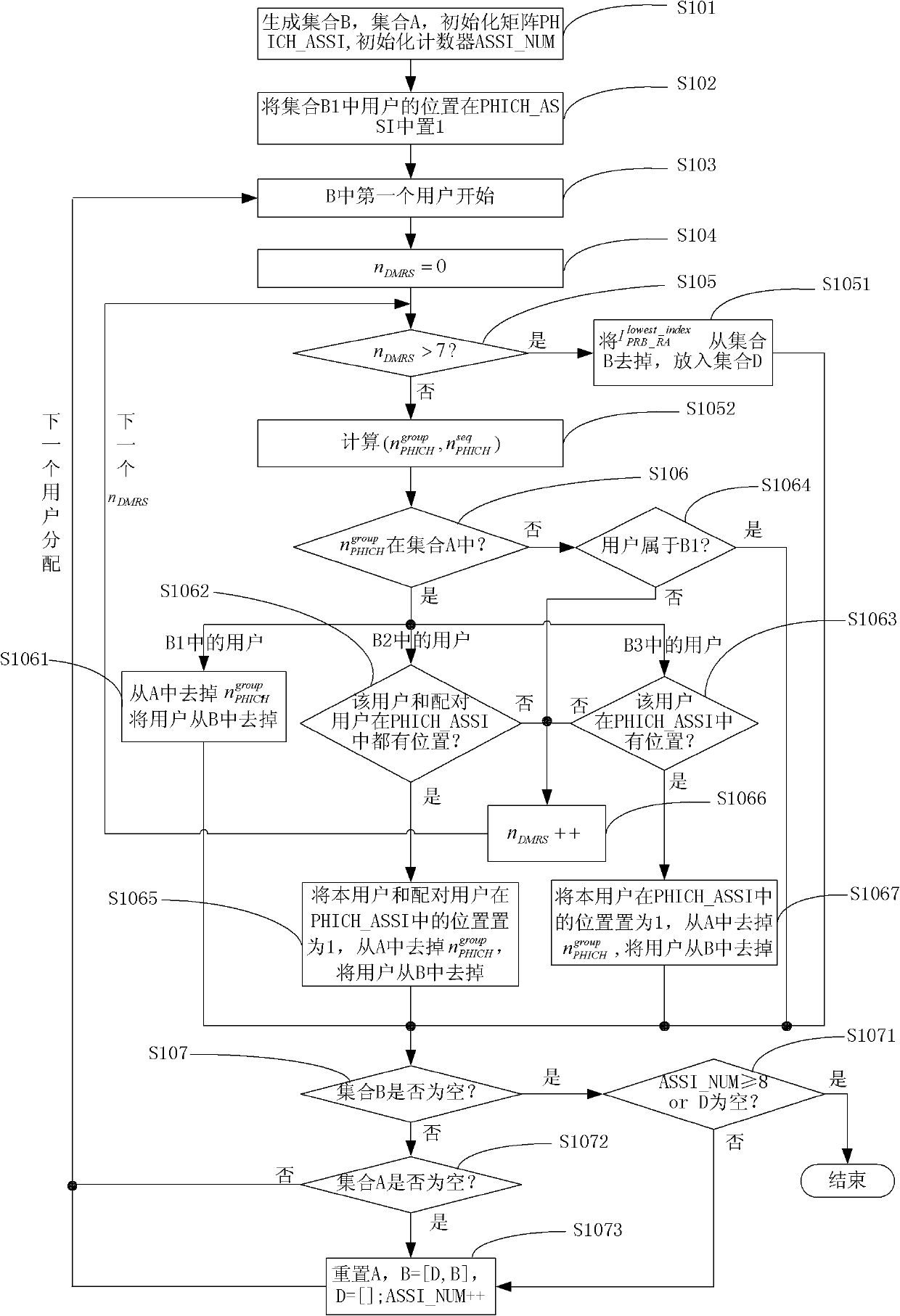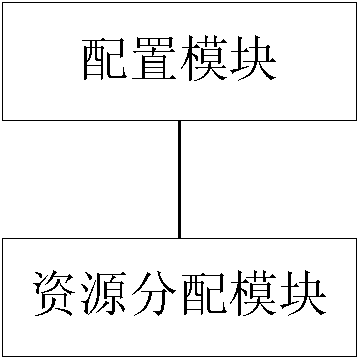A method and device of the resource allocation method and device of a physical hybrid transmission channel
A resource allocation device and retransmission indication technology, applied in the direction of network traffic/resource management, wireless communication, transmission system, etc., can solve problems such as complex resource allocation and increased system complexity, and achieve saving transmission power, reducing complexity, The effect of improving resource utilization
- Summary
- Abstract
- Description
- Claims
- Application Information
AI Technical Summary
Problems solved by technology
Method used
Image
Examples
Embodiment 1
[0058] Such as figure 1 shown, including the following steps:
[0059] Step 1, all users who are to be assigned PHICH resources form a user set; configure a PHICH resource set, and the PHICH resource set is used to mark whether the PHICH resource is available;
[0060] Preferably, when configuring the PHICH resource set, the PHICH group set can also be configured, and the PHICH group set is used to record the PHICH group number of the available PHICH resource;
[0061] In addition, when configuring the PHICH resource set, the remaining user set can also be configured, and the remaining user set is used to record users whose PHICH resource allocation fails;
[0062] Preferably, the user set can be formed in the following manner: the users whose cyclic shift must be 0 form the first subset, and the users of MU-MIMO (Multiple User-Multiple Input Multiple Output, multi-user multiple input multiple output) form the second subset Two sub-sets, other remaining users to be allocated...
Embodiment 2
[0071] For the PHICH resource allocation method under Normal CP in the LTE system, the flow chart of this embodiment is as follows figure 2 shown, including the following steps:
[0072] Step S101: Shift the cycle by n DMRS Minimum PRB index of the user whose value must be 0 A subset B1 is formed in order from small to large, and the MU-MIMO user's A subset B2 is formed in ascending order, and the other remaining users who are to be allocated PHICH resources Form a subset B3 in ascending order, and combine the above three subsets into a user set B, that is, B=[B1, B2, B3]; form groups available for PHICH in ascending order. group set A, namely in The total number of PHICH groups configured for the base station side; set the allocation counter ASSI_NUM to 0; create a PHICH whose size is the maximum number of groups × the maximum number of users that can be accommodated in the group The matrix PHICH_ASSI is initialized to 0, which is used to mark whether the PHICH re...
Embodiment 3
[0106] This embodiment describes a resource allocation device for implementing the methods of Embodiment 1 and Embodiment 2, such as image 3 As shown, including the configuration module and the resource allocation module, where:
[0107] The configuration module is configured to form a user set for all users to be allocated PHICH resources; configure a PHICH resource set, and the PHICH resource set is used to mark whether the PHICH resource is available;
[0108] The resource allocation module is configured to perform the following cyclic operation on each user in the user set: set a cyclic shift value for the user until the PHICH resource calculated using the set cyclic shift value is in the PHICH resource set as available, allocate the available PHICH resource to the user, and mark the resource as unavailable in the PHICH resource set; until there is no available resource in the PHICH resource set or each user in the user set executes the above loop operation.
[0109]Pref...
PUM
 Login to View More
Login to View More Abstract
Description
Claims
Application Information
 Login to View More
Login to View More - R&D
- Intellectual Property
- Life Sciences
- Materials
- Tech Scout
- Unparalleled Data Quality
- Higher Quality Content
- 60% Fewer Hallucinations
Browse by: Latest US Patents, China's latest patents, Technical Efficacy Thesaurus, Application Domain, Technology Topic, Popular Technical Reports.
© 2025 PatSnap. All rights reserved.Legal|Privacy policy|Modern Slavery Act Transparency Statement|Sitemap|About US| Contact US: help@patsnap.com



